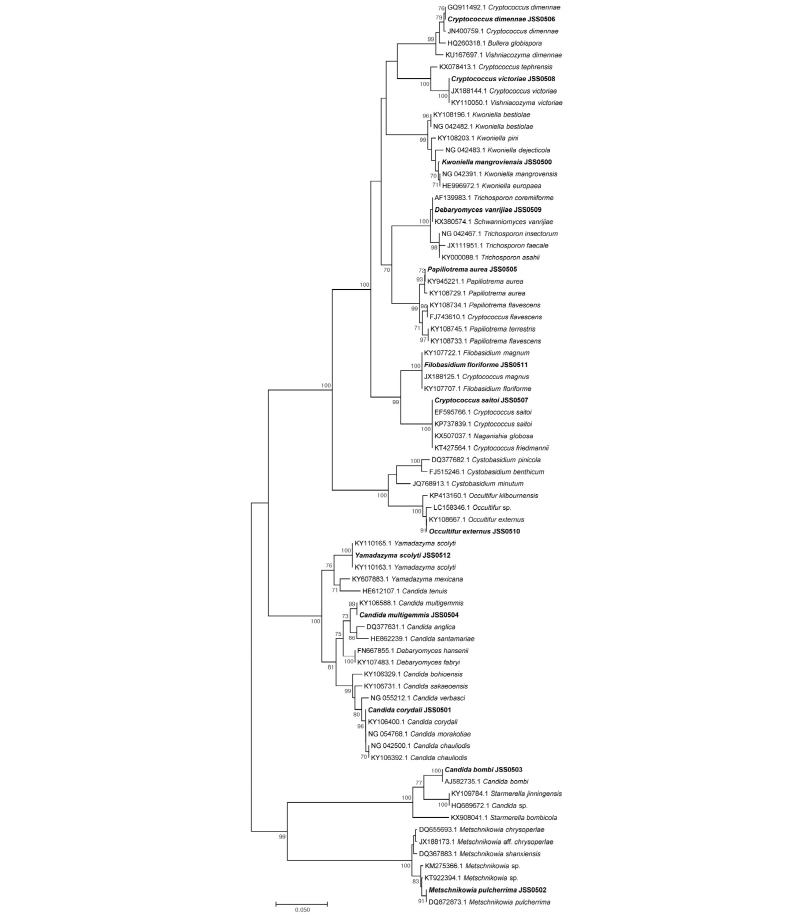Abstract
Totally 91 strains of wild yeasts were isolated from the humus rich soil in the Bogyong city park of Daejeon city, Korea. Majority of the strains belonged to Cryptococcus spp., which included 11 strains of Cryptococcus aureus. Among them, Kwoniella mangroviensis JSS0500, Candida corydalis JSS0501, Candida bombi JSS0503, Candida multigemmis JSS0504, Cryptococcus dimennae JSS0506, Cryptococcus saitoi JSS0507, Cryptococcus victoriae JSS0508, Metschnikowia pulcherrima JSS0502, Papiliotrema aurea JSS0505, Debaryomyces vanrijia JSS0509, Occultifur externus JSS0510, Filobasidium floriforme JSS0511 and Yamadazyma scolyti JSS0512 represented newly recorded yeast strains in Korea, and their microbiological characteristics were investigated. All of these unrecorded yeasts showed oval shape and also formed ascospores and pseudomycelia, except for Kwoniella mangroviensis JSS0500, Candida bombi JSS0503, and Metschnikowia pulcherrima JSS0502. Seven strains including Candida corydalis JSS0501 grew in vitamin-free medium, and 4 of the wild yeasts including Cryptococcus victoriae JSS0508 were halotolerant, i.e., capable of growing in 10% NaCl- containing yeast extract-peptone-dextrose (YPD) broth. Debaryomyces vanrijia JSS0509 was found to be a thermophilic yeast that grew at 37°C.
Acknowledgements
This work was supported by a grant from the National Institute of Biological Resources (NIBR), funded by the Ministry of Environment (MOE) of the Republic of Korea.
Figures & Tables

Fig. 1. Phylogenetic tree of the unrecorded yeasts isolated from humus in city park of Daejeon metropolitan city, based on the nucleotide sequences of large subunit 26S ribosomal DNA D1/D2 region. The tree was generated by the neighbor-joining method, using MEGA7.


